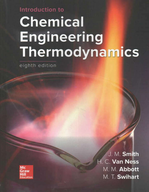?A stream of hydrocarbon gas at 500°C is cooled by continuously combining it with a
Chapter 7, Problem 7.57(choose chapter or problem)
A stream of hydrocarbon gas at 500°C is cooled by continuously combining it with a stream of light oil in an adiabatic tower. The light oil enters as a liquid at 25°C; the combined stream leaves as a gas at 200°C.
(a) Draw a carefully labeled flow diagram for the process.
(b) Let F and D denote respectively the molar flow rates of hot hydrocarbon gas and light oil. Use data given below to determine a numerical value for the oil-to-gas ratio D/F. Explain your analysis.
(c) What is the advantage to quenching the hydrocarbon gas with a liquid rather than with another (cooler) gas? Explain.
Data: \(C_{P}^{v} (ave) = 150 J \cdot mol^{−1} \cdot K^{−1}\) for the hydrocarbon gas.
\(C_{P}^{v} (ave) = 200 J \cdot mol^{−1} \cdot K^{−1}\) for the oil vapor.
ΔHlv (oil) = \(35,000 J \cdot mol^{−1}\) at 25°C.
Text Transcription:
C_P^v (ave) = 150 J cdot mol^−1 cdot K^−1
C_P^v (ave) = 200 J cdot mol^−1 cdot K^−1
35,000 J cdot mol^−1
Unfortunately, we don't have that question answered yet. But you can get it answered in just 5 hours by Logging in or Becoming a subscriber.
Becoming a subscriber
Or look for another answer
